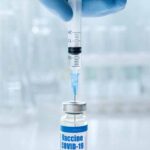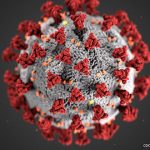Background & Objectives
Patients with gout often have multiple comorbidities, making them susceptible to SARS-CoV-2 infection and poor outcomes. Xie et al. set out to examine the association between gout and the risk of SARS-CoV-2 infection and severe outcomes, especially in patients vaccinated against COVID-19. By identifying individuals who are susceptible to breakthrough COVID-19 and severe outcomes despite vaccination, doctors may identify populations who would benefit from other risk-mitigating strategies (e.g., pre-exposure prophylaxis).
Methods
Xie et al. conducted two cohort studies using The Health Improvement Network (THIN) in the U.K. The database consists of ~17 million individuals from 790 general practices whose healthcare information is systematically recorded by general practitioners and sent anonymously to THIN. Individuals with gout and those without gout from the general population were followed up from Dec. 8, 2020 to Oct. 31, 2021. Xie et al. estimated the rate difference and hazard ratio (HR) of SARS-CoV-2 infection and severe outcomes (i.e., hospitalization and death within 30 days after SARS-CoV-2 infection) for individuals with gout vs. those without gout using a Cox proportional hazards model according to SARS-CoV-2 vaccination status. The researchers adjusted for potential confounders by using overlap weighting of exposure scores.
Results
Among the vaccinated cohort, 1,955 cases of breakthrough COVID-19 infection occurred in individuals with gout (4.68 cases per 1,000 person-months), and 52,468 cases occurred in 1,336,377 individuals without gout (3.76 cases per 1,000 person-months). The adjusted rate difference of breakthrough infection was 0.91 cases per 1,000 person-months (95% confidence interval [CI] 0.62–1.20 cases per 1,000 person-months), and the adjusted HR was 1.24 (95% CI 1.19–1.30). Based on these data, gout was also associated with an increased risk of hospitalization and death. Women with gout also exhibited an increased risk of hospitalization and death. Similar associations with gout were observed in the unvaccinated cohort.
Conclusions
In this large, population-based study, Xie et al. found that the risks of SARS-CoV-2 infection, 30-day hospitalization and 30-day death were higher among individuals with gout than individuals without gout in the general population, irrespective of COVID-19 vaccination status. In addition, women with gout may be more susceptible to severe outcomes of COVID-19 (i.e., hospitalization and death) than men with gout. These findings suggest that additional measures should be considered to mitigate the risk of SARS-CoV-2 infection and potential severe outcomes for individuals with gout, especially women and even after vaccination.
For full study details, including source material, refer to the full article.



